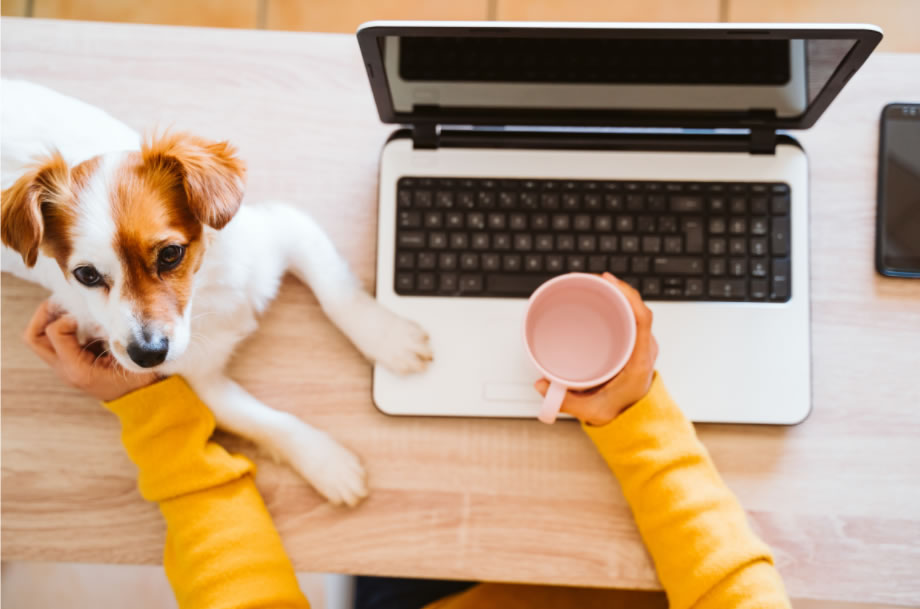


It’s been over a year since 'normality' and at this point, they have become so accustomed to us spending our days with them. Even if you’ve been working from home, they’ve at the very least had the comfort of your presence.
Here at Naturo, a lot of work, time, and investment has gone into making the workplace a safe environment for office employees to begin the transition back to work whilst ensuring social distancing and adherence to government policy. Whilst it was a bit of a culture shock, I have to say that leaving my dog Charlie was undoubtedly the hardest part! He followed me around the first morning I was leaving like a lost puppy and when I told him to go to bed, instead of making his way to bed as he usually would, he began to make his way upstairs to MY bed!!
Charlie, as some of you know is a rescue (who on a normal day is generally quite an anxious doggo), has had his anxiety levels go through the roof the week before I returned to work... it’s almost as if he knew it was coming! Dogs are often smarter than we give them credit for, so perhaps he did!
I couldn’t even tell you the number of times I’ve inadvertently stood on Charlie in the last few days because he’s constantly at my feet! I was tempted to smuggle him into the office as I know he’d sit quietly under my desk as he’s just happy to be close to you.
I know that many of you will have already been or will be faced with these issues in the near future so we’ve pulled together some advice that may help both you and your dog with the transition back to work.
If you have a dog that gets stressed when you leave, start with “fake departures.” This includes going through your normal routine – which may be more involved than even you realize. Everyone has a slightly different routine and many people aren’t even aware of all of the steps that they take, e.g. some people will brush their hair, put on their jacket, make sure the lights are off, put on their shoes, grab their keys, walk to the door and leave.
Do this routine every day for a week or so BUT don’t leave! This will help condition your pet not to associate you actually leaving when you start to go through the motions of your usual daily routine.
Then begin to actually leave the house, but only for 5 minutes, slowly increasing this amount of time each day for 4 or 5 days. It’s also important that your departure and indeed your return is not dramatic; keep the situation as calm and unemotional as possible.
Structures
Dogs are creatures of habit and routine, they thrive on it and it’s how they learn. Given this, if you are working from home, separate yourself from your dog during normal working hours so they don’t become too accustomed to having you there from the get-go!
Unfortunately, this just wasn’t possible with Charlie because if he knows you’re in the house he will stand at the back door and scratch it crying until he is let in.
 A walk before work not only helps stress levels, but is bonding time for you and your dog
A walk before work not only helps stress levels, but is bonding time for you and your dog
Exercise
Where possible, try to walk or exercise your dog before your workday begins. By doing so, you will help reduce their stress levels and it makes you leave them for the day a lot easier on them.
Feeding time
It’s important to show your pet that being away from you is not always a horrible experience. The easiest way to do this is to feed them in a separate room, away from where you are so they realise good things can happen when you’re not there!
Now the only thing left to tackle is the effect it’s having on us humans having to leave our beloved sidekicks again ☹ Tips for that will be well received if you have any!
Lots of Love,
Gemma, Mylo & Charlie
xxx
